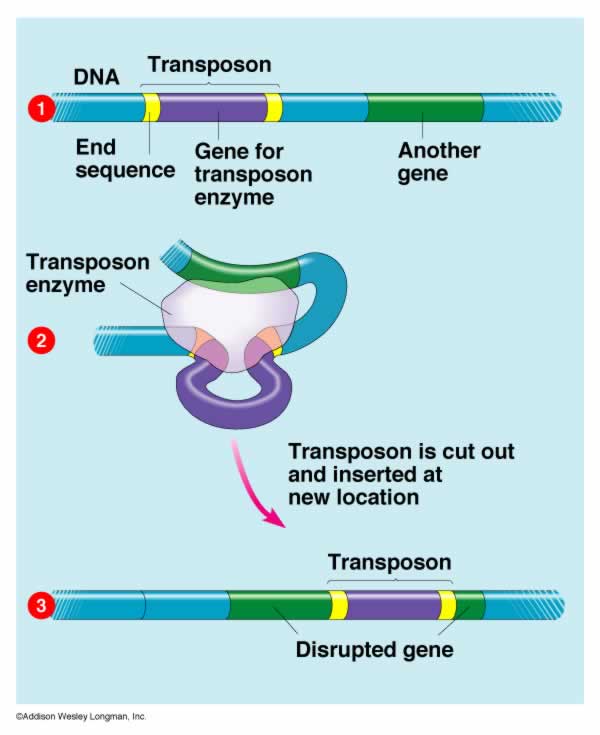By Walter Sorochan
Posted May 5, 2013. Disclaimer The information presented here is for informative and educational purposes only and is not intended as curative or prescriptive advice.
"This article is about a new genetic discovery on how we can control diseases, disorders and health in humans."
Our early understanding of human diseases began with the 1993 mapping of the human genome that included DNA and RNA. But it is only since 2004 that the impact RNA has on diseases and health became clearer with the discoveries that the original RNA is accompanied by smaller RNA genes referred to as RNA interference or RNAi. RNA can switch certain genes and control other genes that affect diseases and health. Ghildiyal: RNA types & functions 2009
RNA interference (RNAi) is a system within living cells that takes part in controlling which genes are active and how active they are. Eggleston: RNA silencing 2009 Ghildiyal: RNA types & functions 2009
The information about how RNA genes work is difficult to understand for most of us. The two videos that follow simplify how RNA i genes work.
The first video introduces the early discovery of Robert Krulwich's petunia accidental discovery of RNAi switching genes off and on to control characteristics and functions of a flower. He identified RNAi as the switch that all organisms have for turning body systems on or off. This new information has implications for applying this new knowledge to plants and animals. RNAi may help us reset the controls for normalized body functions such as the immune and metabolic systems as well as preventing diseases and disorders.
RNAi video #1
The second video continues from the first video:
RNAi gene video # 2
Now that you have viewed the two videos and became more informed about RNA, you are ready for more complexity about RNA. Two types of small RNA molecules – microRNA (miRNA) and small interfering RNA (siRNA) – are central to RNA interference. RNAs are the direct products of genes, and these small RNAs can bind to other specific RNAs (mRNA) and either increase or decrease their activity, for example by preventing a messenger RNA from producing a protein.
 The illustration on the left [ source Dellavedova
] illustrates how RNAi works. RNAi can defend against parasitic genes
and viruses that can cause diseases or disorders. RNAi can recognize and
inactivate certain functions of a plant or animal. It does so by a DNA strand of the gene, a
transposon, being able to jump and
insert itself into a new location in the strand. Such relocation is the
genome switch to turn on or off the behavior of the original gene. Most
of the transposons in the genome are stably silenced and many of them have been “tamed” and do important cellular jobs.
But mother nature has also endowed genes with the ability to change the script
for life.
The illustration on the left [ source Dellavedova
] illustrates how RNAi works. RNAi can defend against parasitic genes
and viruses that can cause diseases or disorders. RNAi can recognize and
inactivate certain functions of a plant or animal. It does so by a DNA strand of the gene, a
transposon, being able to jump and
insert itself into a new location in the strand. Such relocation is the
genome switch to turn on or off the behavior of the original gene. Most
of the transposons in the genome are stably silenced and many of them have been “tamed” and do important cellular jobs.
But mother nature has also endowed genes with the ability to change the script
for life.
 Medical Applications: "It may be possible to exploit RNA interference in therapy.
It is the Transposons, which are pieces of DNA that can “jump” into novel
positions in the genome, that can make this possible. They can insert themselves into DNA without requiring any similar sequence to be present in themselves and their “target”. This makes them powerful mutagens
that can cause mutations and even diseases in humans.
Medical Applications: "It may be possible to exploit RNA interference in therapy.
It is the Transposons, which are pieces of DNA that can “jump” into novel
positions in the genome, that can make this possible. They can insert themselves into DNA without requiring any similar sequence to be present in themselves and their “target”. This makes them powerful mutagens
that can cause mutations and even diseases in humans.
Although it is difficult to introduce long dsRNA strands into mammalian cells due to the interferon response, the use of short interfering RNA mimics has been more successful. Among the first applications to reach clinical trials were in the treatment of macular degeneration and respiratory syncytial virus, RNAi has also been shown to be effective in the reversal of induced liver failure in mouse models.
"Other proposed clinical uses center on antiviral therapies, including topical microbicide treatments that use RNAi to treat infection by herpes simplex virus type 2 and the inhibition of viral gene expression in cancerous cells [at Harvard University Medical School; in mice, so far], knockdown of host receptors and coreceptors for HIV, the silencing of hepatitis A and hepatitis B genes, silencing of influenza gene expression, and inhibition of measles viral replication. Potential treatments for neurodegenerative diseases have also been proposed, with particular attention being paid to the polyglutamine diseases such as Huntington's disease. RNA interference is also often seen as a promising way to treat cancer by silencing genes differentially up-regulated in tumor cells or genes involved in cell division." Wiki: RNAi
Post-transcriptional gene silencing (PTGS), which was initially considered a bizarre phenomenon limited to petunias and a few other plant species, is now one of the hottest topics in molecular biology. In the last few years, it has become clear that PTGS occurs in both plants and animals and has roles in viral defense and transposon silencing mechanisms.
Flash animation 2001 Hammond: animation RNAi of "How Does RNAi Work?"
Your feedback on this article is most appreciated. Thank you: E-mail author
References:
Ashfaq Waseem, "INTRODUCTION TO TRANSPOSONS," Genome Integrity, University of Agriculture, Faisalabad. Ashfaq: TRANSPOSONS
Dellavedova Chris, "Science Tuesday: One Cell’s Junk Is Another Cell’s Treasure," chrisdellavedova.com., January 29, 2008 Dellavedova
Eggleston Angela K., "RNA silencing," Nature, January 22, 2009,457,395,22. Eggleston: RNA silencing 2009
Flintoft Louisa, "Gene-based therapies: Getting RNAi therapies to the brain," Nature Reviews Genetics 12, 296 (May 2011. Flintoft: Alzheimer's disease
Ghildiyal Megha and Phillip D. Zamore, "Small silencing RNAs: an expanding universe," NATuRE REVIEwS, GeNeticS February 2009. Ghildiyal: RNA types & functions 2009
Hammond, S.M., Caudy, A.A., Hannon, G.J., "Flash Animation: How Does RNAi Work?" Post-transcriptional Gene Silencing by Double-stranded RNA. Nature Rev Gen 2001, 2: 110-119. Abstract Hammond: animation RNAi
Laganà Alessandro, Stefano Forte, Francesco Russo, Rosalba Giugno, Alfredo Pulvirenti, Alfredo Ferro, "Prediction of human targets for viral-encoded microRNAs by thermodynamics and empirical constraints," J RNAi Gene Silencing (2010), 6(1), 379-385. Lagana: predicting RNAi
RNAi or RNA interference videos RNAi video information
Roberts Thomas and Helen Curtis, "Gene regulation by small RNAs," J RNAi Gene Silencing April 25, 2010, 6(1), 376-378. Roberts: report on RNAi conference 2010
The 5 th annual international RNAi conference at Oxford, RNAi2010: Gene Regulation by Small RNAs, was held at St Hilda’s College, Oxford, UK (17-18 th March). Advances in RNAi technology.
Transposons Evolution: Genetic Evidence [ transpsons = jumping genes ]
Transposons video 3:21mns long
source: Transposons video
What is RNAi and siRNA? GeneLink, What is RNAi
Wikipedia, RNA interference, Wiki: RNAi